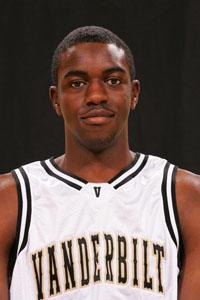Study: D1 Men’s Basketball Players At Highest Risk For Sudden Cardiac Death
Posted by jstevrtc on April 29th, 2011A study published earlier this month in the American Heart Association journal Circulation has found that Division I men’s basketball players are at the highest risk among all college athletes for sudden cardiac death (SCD). According to the authors of the study, there is one incident of SCD for every 3,124 men’s college basketball players in Division I per year. This is an alarming number for many reasons, especially when compared to the incidence of SCD among ALL college athletes that was measured at a much less frequent 1 in 43,770 athletes in a given year.
If you’re like us, you saw that 1 in 3,124 SCD rate for D-I men’s basketball players and immediately remembered that there are over 4,000 guys playing D-I college hoops each season. That would imply that there are between 1-2 players dying from this each year, or between 10-20 over the last ten years. At first blush, that may seem like an impossibly high rate — how many D-I players over the last ten years can you name who died because their hearts stopped? — but the researchers note in the article that during the five year study period (January 2004 through December 2008), nine players suffered SCD. Their math is unfortunately backed up by what really happened.
Everyone remembers the case of Loyola Marymount’s Hank Gathers, whose sudden (and widely broadcast) cardiac death was caused by a heart condition called hypertrophic cardiomyopathy (HCM). That’s a fancy way of saying his heart muscle was thickened for no discernible reason, but still predisposed him to weird, dangerous heart rhythms at times and also caused his heart to pump inefficiently. HCM is a leading cause of sudden cardiac death across all ages, but young people — including athletes — sometimes have a more severe version of it. Quite often, it has no symptoms until it gets you. More recently, we’ve seen cases where D-I players suffered a sudden cardiac arrest (SCA), but were saved, and are alive today because there was an automated external defibrillator (AED) nearby as well as someone who knew how to use it. Seton Hall’s Herb Pope, former Tennessee and New Mexico forward Emmanuel Negedu, and former Vanderbilt player Davis Nwankwo have those devices and the people who used them to thank for their lives. That’s why they’re not included in the study. They lived.
The 1 in 3,124 SCD incidence among D-I men’s basketball players is not just a high number in and of itself — it’s high compared with other athletes in other divisions and other sports. Among basketball players, the next highest rate was found in D-II male basketball players: 1 in 11,330 players/year. The “best” rate among all basketball players was found in D-I females, who have an SCD rate of 1 in 23,901. It might not surprise you to learn that cross-country athletes have the lowest SCD rates, with males and females showing rates of 1 in 59,484 and 1 in 32,801, respectively. What’s surprising, however, is the degree by which those numbers and the incidence rate of D-I men’s basketball players differ.
We simply had to inquire further as to what it is about D-I men’s basketball that entails such a higher risk. We contacted the primary author listed on the study, Kimberly Harmon, MD, team physician and director of the Sports Medicine fellowship at the University of Washington. “It’s a good question. First, men in general are at higher risk, “she explained. “African-Americans are at higher risk [for SCD], probably because of an increased incidence of HCM in African-Americans. There is a high proportion of black men’s basketball players.”
Here, though, is where Dr. Harmon and her team came upon something they didn’t expect at all. “The really surprising finding is the risk in Caucasian Division I players (1 in 6,135) is [roughly] the same as African-Americans (1 in 5,284). In every other place there is a race differential. This may represent an odd statistical anomaly but there may be other reasons as well that we don’t understand yet.” The study does not determine whether that difference is mathematically significant, but the gulf between SCD rates of African-American athletes and Caucasian ones is terribly wide in all the other sports.
We also asked Dr. Harmon why, if the method used to collect the data is valid and the math that resulted from it is correct, the public doesn’t hear more about basketball players dying from SCD. Even with the support of the math, it still seemed too high a number to us.
“The reason we don’t hear about them is that only a little over half make it into media reports and many of those are just local,” she asserted. “A good example of this was that, after the tragic death of the high school student in Michigan after making the game winning shot, five more deaths were reported in the next ten days in high school athletes. There needs to be a mandatory reporting system.” Dr. Harmon is referring to the fact that if a death from SCD happens, it is not necessary to report the incident to any higher agency, and certainly not to the media if a program chooses not to do so.

Not Allowed To Play At Tennessee After His Episode of SCA, Negedu Moved On To New Mexico Where He Played One Season Before Retiring
As if the numbers didn’t do it by themselves, the cases of Pope, Negedu, and Nwankwo illustrate the necessity of having AEDs and people trained to use them ready at hand during practices, games, and even individual workouts. Many schools can’t find a place in the budget for such devices, which cost $1,000-2,000 apiece. If they do have AEDs, many either keep them in a place where they can’t be retrieved in time or they don’t have people trained to use them. “We are getting better at saves,” noted Dr. Harmon in our correspondence. “60% of athletes at schools with AED and emergency action plans survive through discharge from the hospital.”
In addition to having a device and a plan in place in the event of a player suffering a sudden cardiac arrest, the other way to reduce the number of SCDs is to keep them from happening. Currently, the American Heart Association advocates just obtaining a medical history and performing a physical examination of an athlete before they’re allowed to participate. Common heart tests like ECGs, which take about three minutes to do, can detect abnormalities both in terms of heart size and rhythm but are not routinely performed on prospective athletes because studies have not shown it to be a cost-effective practice. We think Pope, Negedu, and Nwankwo, as well as their families, would disagree with such an analysis.
“We began ECG screening at the University of Washington for certain teams two years ago and for all incoming athletes this year,” said Harmon. “This year we found one HCM and one Wolff-Parkinson-White – neither had ever had any symptoms. The WPW…is playing, but the HCM was disqualified.” Wolff-Parkinson-White is a heart condition in which there’s sort of an extra connection between the top and bottom parts of your heart, and it causes your heart rate to skyrocket for no reason. It can be deadly. But it can also be easily cured with a short procedure. In this UW athlete in whom it was found, the early detection may have saved his/her life, and the same can be said about the athlete with HCM that was found and was unfortunately not allowed to play. By no means is it a stretch to say that.
Even with the numbers provided as a result of this study by Dr. Harmon and her colleagues, there is one huge question, in our opinion, that begs to be answered by future research: is there something intrinsic to D-I college basketball that predisposes its participants to a higher risk of SCD? Is it the short bursts of energy (and therefore, jolts of adrenaline) that are required of basketball players, as opposed to, say, cross-country runners or swimmers? Would it have anything to do with the quick changes of pressure inside the chest that come with such bursts of energy that would cause any hidden heart problems to come to light? Could it be related to the bigger spotlight and therefore the elevated pressure felt by the players? We’re just spitballing, of course, but questions like that have to be raised by future investigators. Harmon and her team have done the work in establishing that this is happening. It’s up to someone to now figure out if there’s something else besides race and/or gender differences that contribute to the question of why it’s happening to athletes in our sport at such a higher rate. And it makes no sense not to have plans in place like better screening programs and ready-at-hand AEDs to prevent and treat the SCD/SCA events that do occur.












































Nice Shot: Rush The Court » Blog Archive » Study: D1 Men’s Basketball Players At Highest Risk For Sudden Cardiac Death http://bit.ly/m8916X